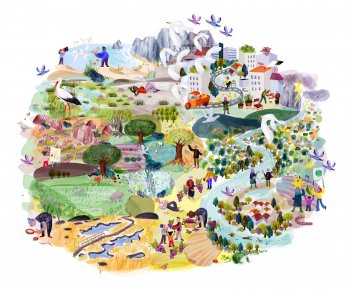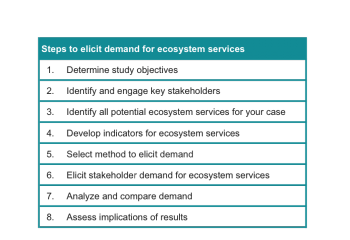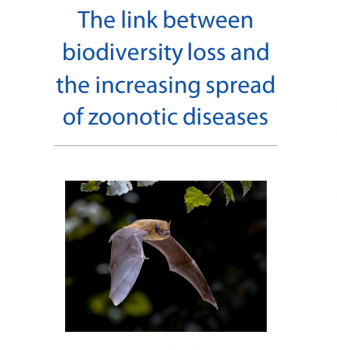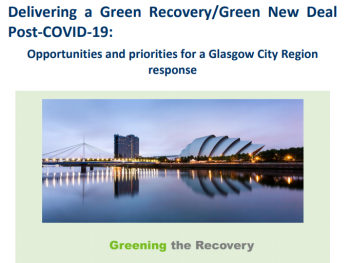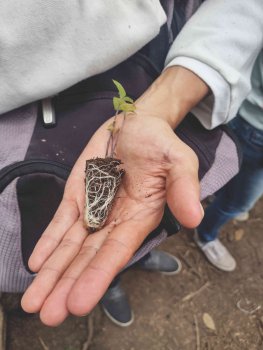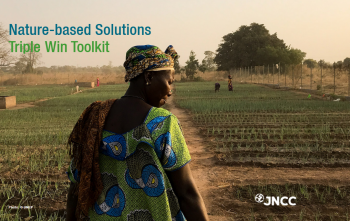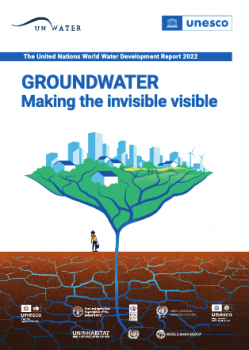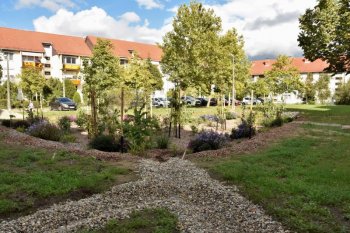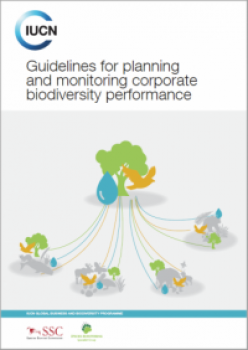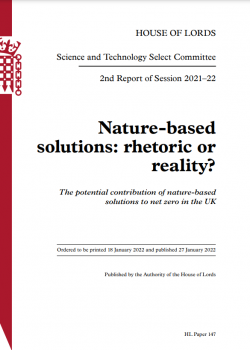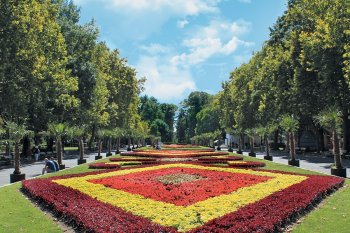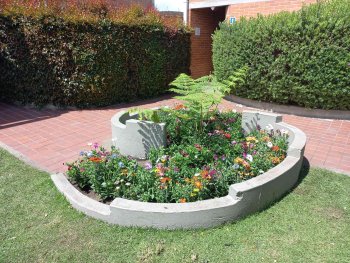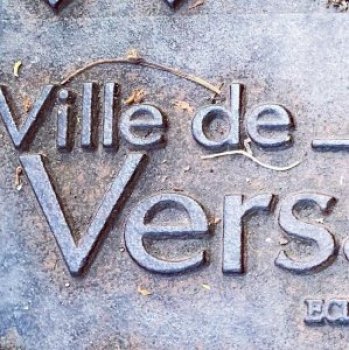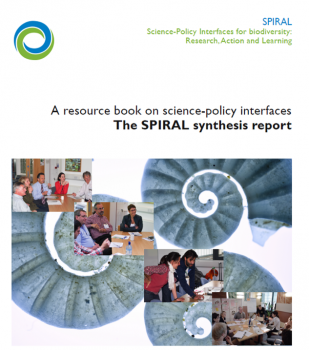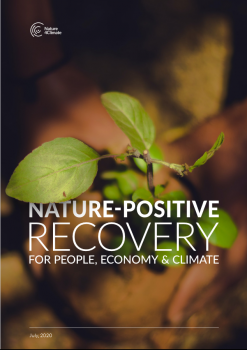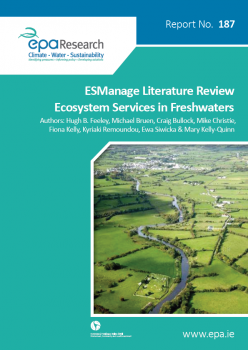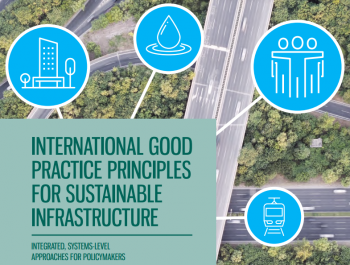Marketplace
NetworkNature Visualisation: EU-Funded Nature-based solutions research projects addressing Societal Challenges across Ecosystems
In this document you can find a visual representation of the different types of ecosystems and most relevant societal challenges in the context of NbS, with the aim to simplify and communicate these concepts, while inspiring NbS good practices. || The European Commission defines Nature-
Quick Guide to Eliciting Demand for Ecosystem Services
This summary document provides an overview of the eight-step framework for eliciting demand for ecosystem services put forth by the OPERAs Exemplars in the full guidance document, Eliciting Demand for Ecosystem Services: Results and User Guidance from the OPERAs Demand Synthesis Working Group. The
The link between biodiversity loss and the increasing spread of zoonotic diseases
Over the last decades, a variety of fatal infectious diseases have had zoonotic origins. The linkages between hosts, vectors, parasites and pathogens can be influenced by a multitude of factors, such as biodiversity, wildlife and land use. High levels of biodiversity may be a potential source of
Co-learning Forum Handbook for application of the Co-learning Forum methodology
This handbook is a how-to guide for implementing Co-learning Forums, a platform for co-learning and co-production of knowledge, and includes key methodology and tools for organisation and facilitation, in both digital and face-to-face participatory activities. The methodology is grounded in the
Delivering a Green New Deal post COVID-19 – opportunities and priorities for a Glasgow City Region response
The paper has reviewed the recent green recovery literature, and considered the role that such interventions could play post-COVID-19 and identifies a series of steps that could help Glasgow City Region Cabinet and Regional Economic Partnership implement a green recovery package.
Conexus Life-Lab factsheet series - Nature-based Solutions to restore urban hydro-social systems
The Bogotá Life-Lab focuses on restoration actions and capacity-building activities to support peri-urban communities. These activities aim to protect forest and wetland ecosystems, while strengthening communities in border territories, and social acceptance of NbS. Community participation and co-
Nature-based solutions Triple Win Toolkit
This Toolkit offers guidance to achieve, through Nature-based Solutions (NbS), a 'triple win' to enhance biodiversity, address climate change, and reduce poverty in the context of Official Development Assistance (ODA) spend, especially for the International Climate Finance (ICF) programme
UrbanByNature: a capacity-building and knowledge-sharing programme for nature-based solutions
UrbanByNature is a facilitated capacity-building programme promoting exchange among cities, researchers, SMEs and NGOs to build bridges with the Nature-Based Solutions communities across Europe, Asia, Latin America, and other interested regions. The programme is powered by ICLEI - Local Governments
UN World Water Development Report 2022
Accounting for approximately 99% of all liquid freshwater on Earth, groundwater has the potential to provide societies with tremendous social, economic, and environmental benefits and opportunities. Groundwater already provides half of the volume of water withdrawn for domestic use by the global
ZÖLD-KÉK INFRASTRUKTÚRA: Tudástár az esőkertek témakörében
A közzétett tudásanyagokat a Zöld Küldetés Egyesület publikálta honlapján, amelyek célja a tudásmegosztás a körkörös városi vízgazdálkodás, kiemelten az esőkertek terén. A közzétett tudásanyagok az alábbiak: - Szakmai tanácskozás esőkertekről - videóanyag az esőkertek építésének alapelveiről
Guidelines for planning and monitoring corporate biodiversity performance
These guidelines offer an approach for developing a corporate-level biodiversity strategic plan, including measurable goals and objectives and a set of core linked indicators, that will allow companies to measure their biodiversity performance across their operations. The Guidelines can be used by
Nature-based solutions: rhetoric or reality? The potential contribution of nature-based solutions to net zero in the UK
While the UK Government’s ambitions for nature-based solutions are admirable, there is a clear and present danger that they will not be achieved, and this could undermine the target of net zero by 2050, as well as the agricultural sector, with a failed transition. The House of Lords recommends that
Connecting Nature Framework: SAINT TRINITY PARK CITY OF BURGAS
The development and maintenance of the green system on the territory of the municipality of Burgas is a main task and priority of the local administration. Over the years, most of the main green areas in the city have been renovated, incl. the sea garden, parks in the residential complexes, under
Conexus key learning factsheet series - Nature-based Solutions in Latin American and European countries: Trends and perspectives
The conceptual development and practical implementation of Nature-based Solutions (NbS) has rapidly advanced in the European Union (EU) and Latin American (CELAC) cities. A 2000-2020 literature review on NbS and related concepts shows advances, gaps, and insights, generating a valuable reference on
Seedbed Intervention: Versailles
The seedbed intervention in Versailles took place in the Square Blaise Pascal which will be the site of the NBS interventions and is currently composed of 3 sections: 1300sqm park for children with many play facilities, 1730sqm park intensive green space with cherry trees and ping pong tables and a
The SPIRAL synthesis report: A resource book on science-policy interfaces
This is a resource book on good practices to improve the effectiveness of existing science-policy interfaces or develop new ones. The resource book synthesises information gathered and research done throughout the SPIRAL project (‘Science-Policy Interfaces: Research, Action and Learning’). The
NBS EduWORLD Learning Units
The NBS EduWORLD Learning Units page offers a comprehensive and flexible suite of resources designed to integrate Nature-Based Solutions (NBS) into higher education and professional training. With 50 curated Learning Units, this platform supports educators, students, and practitioners at all levels
Nature Positive Recovery
"While the most immediate priorities of COVID-19 responses have rightly been health and economic well-being, the crisis has also created a new appreciation for how our encroachment on nature poses significant risks. There is, however, much more work to be done to help decision-makers recognize
ESManage Literature Review: Ecosystem Services in Freshwaters
The ESManage Literature Review highlights how pressures have implications for a range of ecosystem services derived from freshwaters. It considers how the framework aligns with the objectives of current policy and legislation to inform management of freshwater resources. This review details the
International Good Practice Principles for Sustainable Infrastructure
The International Good Practice Principles for Sustainable Infrastructure set out ten guiding principles that policymakers can follow to help integrate sustainability into infrastructure planning and delivery. They are focused on integrated approaches and systems-level interventions that
- ‹ previous
- 18 of 55
- next ›

